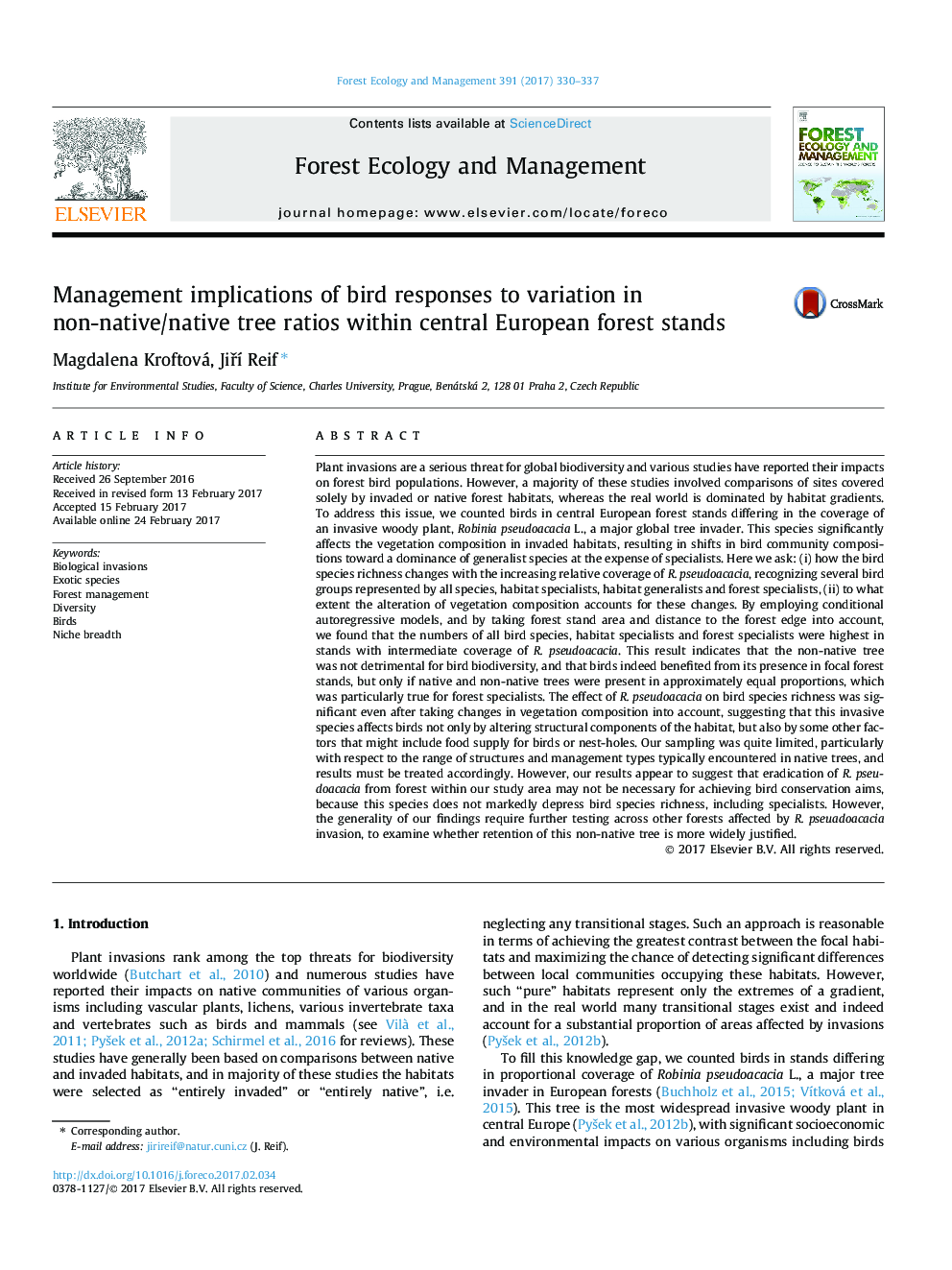| کد مقاله | کد نشریه | سال انتشار | مقاله انگلیسی | نسخه تمام متن |
|---|---|---|---|---|
| 6459465 | 1421367 | 2017 | 8 صفحه PDF | دانلود رایگان |
- Relative coverage of invasive Robinia pseudoacacia varied in focal forest stands.
- Bird species richness had unimodal relationship to increasing R. pseudoacacia cover.
- Alteration of vegetation structure cannot fully account for this relationship.
- To deliver benefits for birds, total eradication of R. pseudoacacia is not justified.
Plant invasions are a serious threat for global biodiversity and various studies have reported their impacts on forest bird populations. However, a majority of these studies involved comparisons of sites covered solely by invaded or native forest habitats, whereas the real world is dominated by habitat gradients. To address this issue, we counted birds in central European forest stands differing in the coverage of an invasive woody plant, Robinia pseudoacacia L., a major global tree invader. This species significantly affects the vegetation composition in invaded habitats, resulting in shifts in bird community compositions toward a dominance of generalist species at the expense of specialists. Here we ask: (i) how the bird species richness changes with the increasing relative coverage of R. pseudoacacia, recognizing several bird groups represented by all species, habitat specialists, habitat generalists and forest specialists, (ii) to what extent the alteration of vegetation composition accounts for these changes. By employing conditional autoregressive models, and by taking forest stand area and distance to the forest edge into account, we found that the numbers of all bird species, habitat specialists and forest specialists were highest in stands with intermediate coverage of R. pseudoacacia. This result indicates that the non-native tree was not detrimental for bird biodiversity, and that birds indeed benefited from its presence in focal forest stands, but only if native and non-native trees were present in approximately equal proportions, which was particularly true for forest specialists. The effect of R. pseudoacacia on bird species richness was significant even after taking changes in vegetation composition into account, suggesting that this invasive species affects birds not only by altering structural components of the habitat, but also by some other factors that might include food supply for birds or nest-holes. Our sampling was quite limited, particularly with respect to the range of structures and management types typically encountered in native trees, and results must be treated accordingly. However, our results appear to suggest that eradication of R. pseudoacacia from forest within our study area may not be necessary for achieving bird conservation aims, because this species does not markedly depress bird species richness, including specialists. However, the generality of our findings require further testing across other forests affected by R. pseuadoacacia invasion, to examine whether retention of this non-native tree is more widely justified.
Journal: Forest Ecology and Management - Volume 391, 1 May 2017, Pages 330-337
